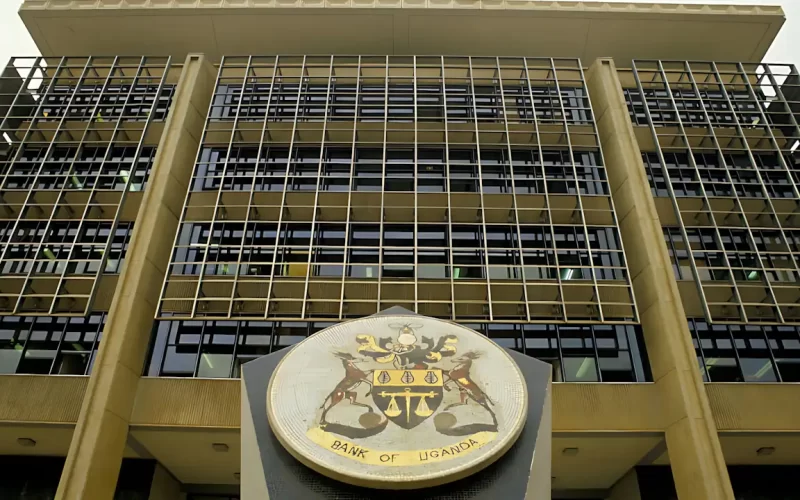Hackers Steal $17 Million From Ugandan Central Bank: A Deep Dive Into the Cyber Heist
In an alarming turn of events, hackers successfully infiltrated the Bank of Uganda (BoU), executing a cyber heist that resulted in the theft of $17 million. The incident has not only shaken the nation’s financial system but also highlighted the vulnerabilities of central banks in the digital age. As Uganda grapples with the aftermath, this case serves as a stark reminder of the ever-evolving threats posed by cybercrime.
The Anatomy of the Heist
How It Happened: The Timeline of Events
- Initial Intrusion: The attack reportedly began with a sophisticated phishing campaign targeting senior officials within the Bank of Uganda. Emails, crafted to mimic legitimate communications, contained malware that infiltrated the bank’s internal network.
- Network Reconnaissance: Once inside, the hackers conducted an extensive reconnaissance phase, identifying critical systems, user credentials, and transaction workflows. This stage likely spanned weeks or even months, highlighting the patience and sophistication of the attackers.
- Execution: The attackers exploited vulnerabilities in the bank’s SWIFT (Society for Worldwide Interbank Financial Telecommunication) system, a global network used for secure financial messaging. By forging payment instructions, they siphoned $17 million into multiple offshore accounts, most of which were located in jurisdictions notorious for weak regulatory oversight.
- Discovery and Response: The heist came to light when discrepancies were noticed during routine audits. By then, the funds had already been dispersed, complicating recovery efforts.

Key Players: Who Are the Hackers?
While investigations are ongoing, cybersecurity experts believe the perpetrators belong to an advanced persistent threat (APT) group with ties to international cybercrime syndicates. These groups often operate with state sponsorship or as loosely affiliated networks of hackers.
Modus Operandi:
- Phishing Attacks: Exploiting human vulnerabilities remains a hallmark of their strategy.
- Zero-Day Exploits: Leveraging unpatched software vulnerabilities for infiltration.
- Money Laundering Networks: Using a web of shell companies and cryptocurrency to obscure financial trails.
Implications for Uganda and Beyond
Economic Fallout:
The theft has disrupted the Bank of Uganda’s financial operations, shaking investor confidence. Economists warn of potential inflationary pressures as the central bank seeks to replenish its reserves.
Public Trust:
For ordinary Ugandans, the heist has sown seeds of distrust in the nation’s financial institutions. The perception of systemic vulnerabilities could lead to reduced reliance on formal banking systems, driving a shift towards informal financial practices.
International Relations:
The theft has drawn attention from international regulatory bodies, with calls for stricter compliance and enhanced cybersecurity measures. Uganda’s ability to secure future foreign investments may hinge on its response to this crisis.

Understanding the Broader Cybersecurity Landscape
Trends in Financial Cybercrime:
- Increased Targeting of Central Banks: Recent years have seen similar heists, such as the $81 million theft from Bangladesh Bank in 2016.
- Cryptocurrency as a Tool for Laundering: Hackers increasingly use cryptocurrencies to move stolen funds, taking advantage of blockchain’s pseudonymity.
- Rise of Ransomware-as-a-Service (RaaS): Organized groups now offer hacking tools for rent, democratizing access to cybercrime.
Technological Vulnerabilities:
- Legacy Systems: Many financial institutions, including central banks, rely on outdated infrastructure, making them attractive targets.
- Insider Threats: Employees with access to critical systems can be unwitting accomplices or direct participants in breaches.
- IoT and Mobile Banking Risks: As financial services expand into new technologies, the attack surface grows.

Lessons Learned and Path Forward
Strengthening Cyber Defenses:
- Comprehensive Risk Assessments: Regularly auditing and updating systems to identify and mitigate vulnerabilities.
- Advanced Threat Detection: Leveraging AI and machine learning to detect anomalous activities in real time.
- Employee Training: Educating staff about phishing attacks and other social engineering tactics.
- Collaboration: Partnering with international cybersecurity organizations for knowledge sharing and coordinated defense strategies.
Regulatory Overhaul:
- Enhanced compliance with international cybersecurity standards like ISO/IEC 27001.
- Mandating timely reporting of breaches to ensure swift containment.
- Incentivizing private sector collaboration through tax breaks or grants for adopting advanced security measures.

Case Studies: Learning from Global Incidents
Bangladesh Bank Heist (2016):
The hackers used similar tactics, exploiting weaknesses in the SWIFT system to steal $81 million. Lessons learned include the need for multi-layered authentication and anomaly detection systems.
Ecuador’s Banco del Austro (2015):
An insider threat coupled with weak password policies allowed hackers to siphon $12 million. The case emphasized the importance of access control and employee background checks.
The Role of International Cooperation
Cybercrime knows no borders. Effective responses require global collaboration among law enforcement agencies, financial institutions, and cybersecurity experts.
Interpol and Europol’s Efforts:
- Facilitating information sharing between nations.
- Tracking and freezing assets in offshore accounts.
- Conducting joint operations to dismantle cybercrime syndicates.
Public-Private Partnerships:
- Encouraging banks to share threat intelligence with governments.
- Developing standardized protocols for cyber incident reporting.
Conclusion: A Wake-Up Call for Financial Institutions
The $17 million heist at the Bank of Uganda underscores the pressing need for robust cybersecurity measures in the financial sector. As hackers grow more sophisticated, central banks and financial institutions must evolve their defenses accordingly. For Uganda, this incident is a harsh lesson but also an opportunity to emerge stronger and more resilient in the face of future threats. The global financial community must heed this warning and act collectively to safeguard the backbone of modern economies.









